




Discover the valuable insights our consultants provide. Subscribe to our Insights blog to receive email alerts whenever we post something new!


Published on: Sep 3, 2025 9:00:00 AM by Cailee Hanson
Updated on: September 3, 2025
Modern finance teams need more than static reports and repetitive tasks. They need tools that help them stay ahead. That’s where dynamic financial reporting and task automation come in.
When used together, these tools transform the finance function from reactive to proactive, freeing up time, improving visibility, and streamlining operations across the board.
Let’s explore how to make your accounting system work harder for you through smarter reporting and automation strategies.
At the heart of Acumatica’s financial reporting tools are five key building blocks:
| Account Classes | These group GL accounts for easy filtering and sorting. Instead of manually updating multiple reports when a new account is added, you can simply assign the new account to an existing class. |
| Report Definitions | Think of this as the blueprint for a report. It combines rows, columns, and optional unit sets to determine what data is shown and how. |
| Row Sets | Define what appears in each row of your report, how it’s labeled, and how values are calculated. The real time-saver? You can reuse the same row set across multiple reports. |
| Column Sets | Similar to row sets, column sets handle how data is organized and calculated across columns. This is also reusable across various reports. |
| Unit Sets | This is where reporting gets really flexible. Unit sets allow you to view data through different lenses, like branches, departments, or product lines, without rerunning reports or changing your base setup. |
With these components, your financial reports become modular, scalable, and much easier to manage.
 Insight: Embrace the Future: What's New in Acumatica's 2025 R1 Release
Insight: Embrace the Future: What's New in Acumatica's 2025 R1 Release
Let’s say you want to view a profit and loss statement by department, but also roll those departments into broader categories like “Admin,” “Logistics,” or “Strategy and Growth.” Using unit sets, you can create a custom structure that rolls up various departments into business units and toggle between them in a single report.
There’s no need to manually manipulate the data every time you want to see it from a new angle. Once the unit set is created, switching between views is as easy as clicking a dropdown.
Repetitive journal transactions? There are several ways to make them easier:
| Copy/Paste and Upload from Excel | Quickly bring in multiple journal lines at once, either by pasting them directly or uploading from a spreadsheet. |
| Templates | Save frequent transactions, like monthly rent or recurring expenses, as templates that can be reused and modified. |
| Recurring Transactions | For items that happen on a regular cadence and rarely change (e.g., monthly advertising), set up a recurring transaction profile. The system generates these automatically on a schedule. |
These small efficiencies add up to major time savings over the course of a month.
 Insight: Unlock the Power of Acumatica's Analysis Tools for Data-Driven Decision Making
Insight: Unlock the Power of Acumatica's Analysis Tools for Data-Driven Decision Making
Allocating shared expenses like utilities or overhead doesn’t need to be a manual process. Acumatica lets you:
Once configured, these allocations can be run on a schedule, keeping your books current without extra effort.
For companies offering subscriptions or services billed upfront, deferred revenue recognition can be time-consuming and error-prone. Acumatica simplifies this through:
| Deferral Codes | Define recognition methods (e.g., evenly by period) and durations. |
| Item-Based Rules | Link deferral codes to specific non-stock items, so recognition schedules are automatically triggered when those items are billed. |
| Automated Schedules | Run recognition on a schedule, with the system creating and posting journal entries for each period. |
This structure reduces the chance of missing revenue recognition deadlines and keeps compliance in check.
Task automation doesn’t stop at journal entries. The Automation Schedules and Business Events features can further streamline workflows across the platform.
Any processing screen (e.g., allocations, deferred revenue, approvals) can be scheduled to run at regular intervals without human intervention.
Trigger actions like sending emails or alerts based on conditions or record changes. For example:
These tools reduce manual follow-ups and create a more responsive finance function.
 Insight: Building a Strong Foundation: Importance of Data Governance
Insight: Building a Strong Foundation: Importance of Data Governance
The shift from reactive to proactive accounting starts with smarter tools and the right setup. Dynamic reporting lets you view your data from multiple perspectives without rebuilding reports.
Meanwhile, automation removes the burden of routine tasks, freeing your team to focus on strategy, not spreadsheets.
If you're looking to reduce manual work and get more insight from your financial data, this approach is worth exploring. It's not just about saving time, it’s about gaining the flexibility and accuracy that modern finance demands.
© 2025 SVA ConsultingShare this post:

Cailee works as a Business Solutions and Pre-Sale Consultant at SVA Consulting. She collaborates with prospects and clients daily to grasp their needs, leverage technology to align with their business objectives, and identify opportunities for organizational growth. Cailee plays a pivotal role in driving the success of numerous eCommerce, CRM, and digital transformation projects for clients. Cailee's understanding and identification of ever-evolving industry trends assist her in providing quality service to clients to help them reach Measurable Results. With a degree in Entrepreneurship from the University of Wisconsin-Madison, Cailee infuses each project with an entrepreneurial perspective to drive success for all stakeholders involved.







contact@svaconsulting.com

(800) 366-9091

1221 John Q Hammons Dr., Suite 201, Madison, WI 53717

18650 W. Corporate Dr., Suite 205, Brookfield, WI 53045

1600 Utica Ave S, 9th Floor,
Saint Louis Park, MN 55416

7135 E. Camelback Road, 230, Scottsdale, AZ 85251

109 West Commercial Street, Suite 107, Sanford, FL 32771
©2026 SVA Consulting, LLC. All Rights Reserved. | Privacy Policy | Cookie Policy | CCPA
